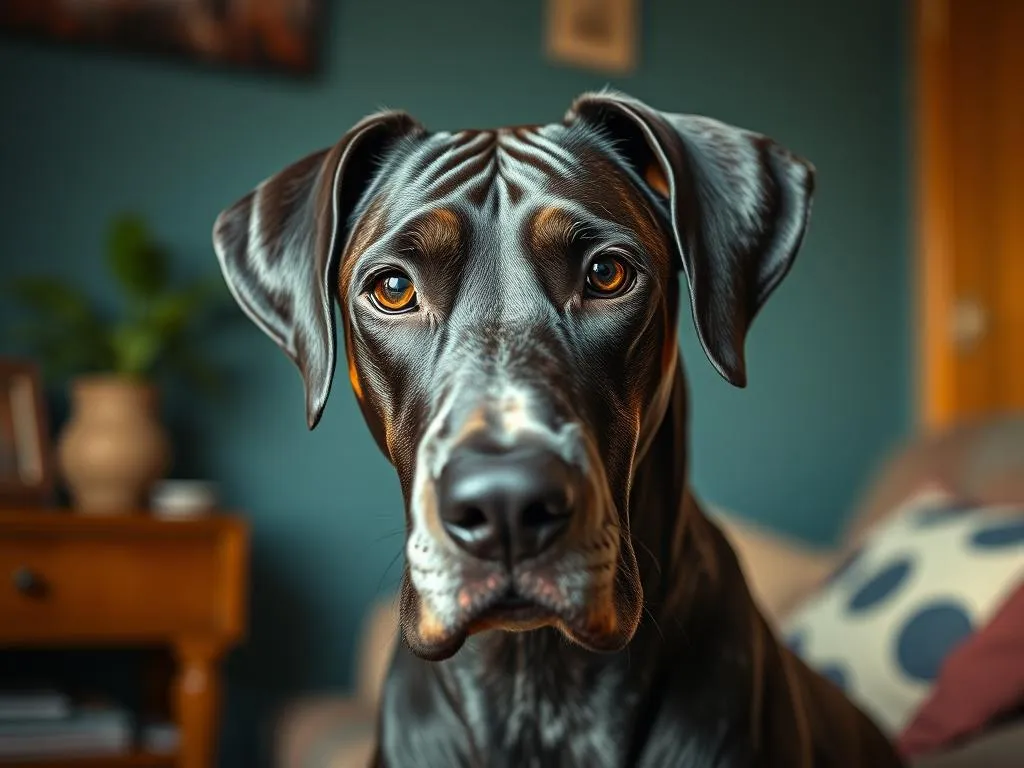
Introduction
Selecting the right dog breed for apartment living is crucial for both the pet and the owner. With space constraints and lifestyle differences, it’s vital to ensure that the dog can thrive in a smaller environment. Among the various breeds, the Great Dane stands out due to its imposing size and gentle demeanor. This article explores the question: Is Great Dane a good apartment dog? We will delve into the breed’s characteristics, living requirements, and how well they adapt to living in an apartment setting.
Overview of Great Danes
Breed Characteristics
Great Danes are recognized for their impressive size, often towering over other breeds. Adult males typically weigh between 140 to 175 pounds, while females generally range from 110 to 145 pounds. Despite their size, Great Danes are known for their gentle and friendly temperament. They are affectionate, loyal, and great with families, making them a popular choice among dog lovers.
In terms of lifespan, Great Danes typically live between 7 to 10 years. Unfortunately, they can be prone to several health issues, including hip dysplasia and bloat, which are important considerations for potential owners.
History and Origin
The Great Dane has a rich history that dates back to ancient times. Originally bred in Germany for hunting large game, these dogs were valued for their strength, speed, and endurance. Over time, their role shifted towards companionship and family pets, leading to their popularity today. Although they were once used as guardians of estates, Great Danes have evolved into gentle giants known for their loving nature.
Apartment Living Considerations
Space Requirements
When considering if a Great Dane is a good apartment dog, a primary concern is the physical space needed. These dogs require a significant amount of space due to their size. While they can adapt to smaller living environments, it’s essential to ensure they have enough room to move around comfortably.
In comparison to other large breeds that may also be suitable for apartments, Great Danes may require more space due to their sheer size. However, their calm demeanor can sometimes offset the need for extensive room.
Exercise Needs
Great Danes have moderate exercise needs. They typically require around 30 to 60 minutes of physical activity each day. For apartment living, this means that owners must be proactive in providing opportunities for exercise outside the home. Daily walks, visits to dog parks, and regular play sessions are crucial to keep them healthy and mentally stimulated.
Being proactive about exercise is essential. Finding nearby parks or suitable walking routes can help meet their needs, ensuring they get enough physical activity while living in an apartment.
Noise and Behavior
Great Danes are generally known for their calm behavior, making them suitable for apartment living. While they may bark occasionally, they are not typically excessive barkers. Their gentle nature allows them to adjust well to apartment life, provided they receive proper training and socialization.
Potential owners should be prepared to manage their dog’s behavior in confined spaces, as larger dogs can sometimes feel cramped and react differently than smaller breeds.
Pros of Having a Great Dane in an Apartment
Temperament and Compatibility
One of the significant advantages of having a Great Dane in an apartment is their temperament. They are known for being friendly, affectionate, and great companions. Their social nature makes them compatible with families and individuals alike, creating a warm and loving household.
Minimal Space Needs for Daily Activities
Despite their size, Great Danes can adapt their living habits to smaller spaces. With proper training and socialization, they can learn to be well-behaved in confined areas. Establishing a designated area for their bed or toys can help them feel secure in an apartment setting.
Emotional Benefits
Having a Great Dane in an apartment also brings emotional benefits. The companionship of a Great Dane can significantly improve mental well-being, providing comfort and reducing feelings of loneliness. Their loving nature can enhance the lifestyle of apartment dwellers, making them feel more connected and fulfilled.
Cons of Having a Great Dane in an Apartment
Space Limitations
While Great Danes can adapt to apartment life, there are challenges associated with their size. Limited space can lead to discomfort, especially if the dog does not have enough room to stretch and move freely. Maneuverability can become an issue, which may affect both the dog and the owner’s quality of life.
Exercise Challenges
Meeting a Great Dane’s exercise needs can be more challenging in an apartment setting. Owners must be diligent in providing enough outdoor time and physical activities. Without proper exercise, Great Danes may develop behavioral issues or health problems.
Solutions include establishing a routine for daily exercise, utilizing nearby parks, and engaging in interactive play to keep them active.
Health Considerations
Living in smaller spaces can contribute to health issues for Great Danes. Common concerns include joint problems and obesity, which can be exacerbated by a lack of exercise. Regular veterinary check-ups are essential to monitor their health and ensure they remain fit and healthy.
Tips for Living with a Great Dane in an Apartment
Creating a Comfortable Living Environment
A well-structured living environment is crucial for a Great Dane in an apartment. Suggestions include providing a comfortable dog bed, creating a designated area for their belongings, and maintaining a clutter-free environment to ensure they can move around safely.
Establishing a Routine
Establishing a consistent daily routine is important for both the owner and the dog. Recommended routines should include regular exercise, feeding times, and bathroom breaks. Consistency in training and daily activities can help reduce anxiety and make apartment living more manageable for Great Danes.
Socialization and Interaction
Socializing a Great Dane in an apartment setting is vital. It’s important for them to interact with other dogs and people, which can help prevent behavioral issues. Regular outings to dog parks and social events can provide valuable experiences and interactions.
Alternatives to Great Danes for Apartment Living
Smaller Dog Breeds
For those considering other options, several smaller dog breeds thrive in apartments. Breeds such as the French Bulldog, Cavalier King Charles Spaniel, and Pug can be excellent choices for apartment dwellers. They typically require less space and can adapt more easily to confined living situations.
Other Large Dog Breeds Suitable for Apartments
While Great Danes can adapt to apartment living, some other large breeds may be better suited for smaller spaces. Breeds like the Basset Hound or Bulldog tend to be more laid-back and require less exercise, making them ideal for apartment living. Their temperament and size can offer a good balance for those looking for a larger dog without the challenges that come with a Great Dane.
Conclusion
In summary, the question of whether a Great Dane is a good apartment dog can be answered with a nuanced approach. While they can adapt to apartment living, potential owners must consider their specific circumstances and lifestyle. Great Danes offer companionship and love, but their size and exercise needs present unique challenges.
Ultimately, successful apartment living with a Great Dane requires commitment, training, and a willingness to provide the necessary care and attention. By evaluating personal living situations and understanding the breed’s requirements, potential dog owners can make an informed decision about welcoming a Great Dane into their home.









